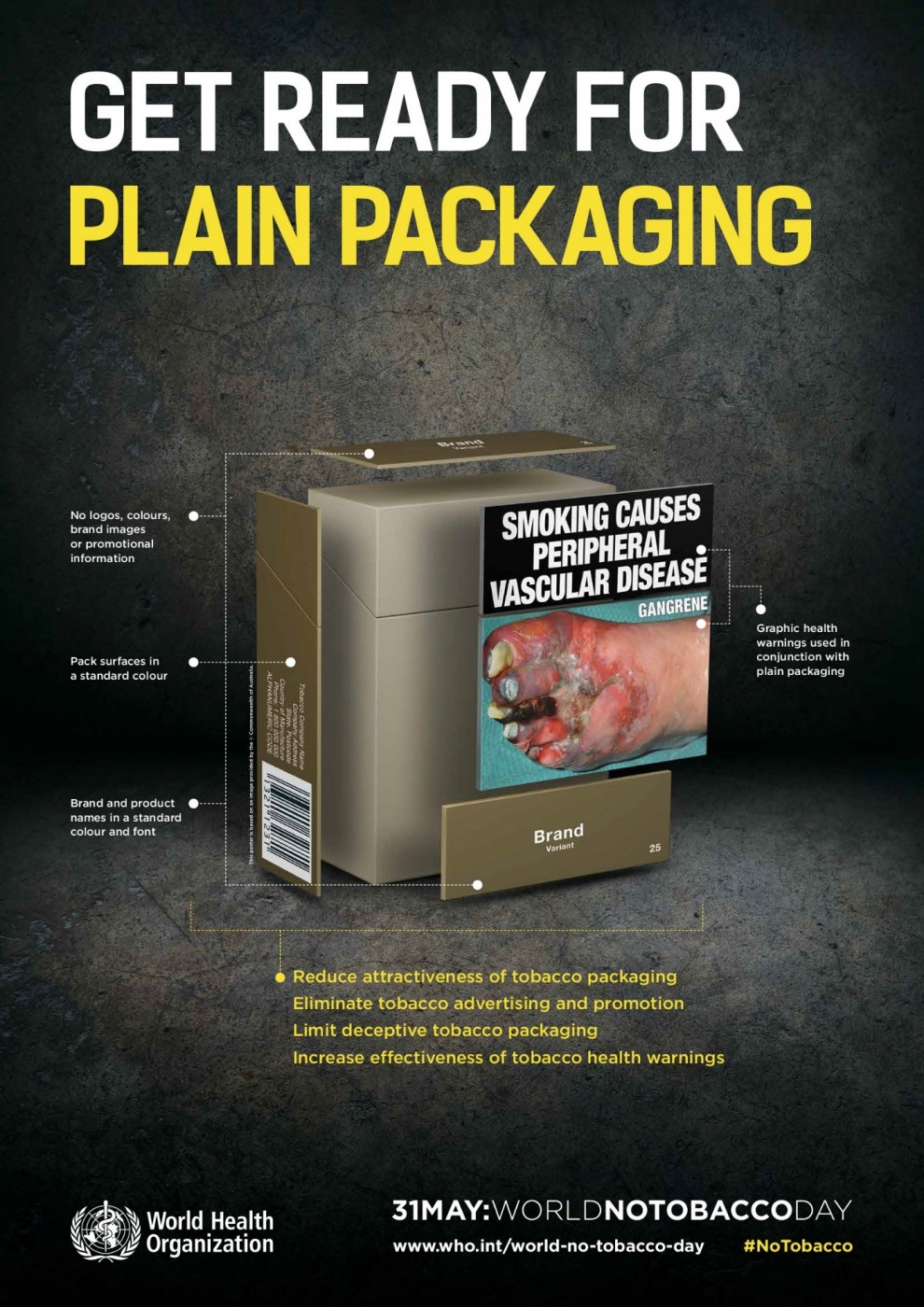You are here
World No Tobacco Day 2016: Plain Packaging for Tobacco Products
 Every year, on May 31, countries around the world celebrate World No Tobacco Day, which highlights effective policies to reduce tobacco consumption. This year, World No Tobacco Day focuses on plain packaging, which is a tobacco control strategy related to health warnings. Plain packaging refers to measures that restrict or prohibit the use of logos, colors and brand images or promotional information on tobacco packaging. The use of plain packaging has been shown to reduce the attractiveness of tobacco products, limits misleading packaging and labeling and increases the effectiveness of graphic health warnings.
Every year, on May 31, countries around the world celebrate World No Tobacco Day, which highlights effective policies to reduce tobacco consumption. This year, World No Tobacco Day focuses on plain packaging, which is a tobacco control strategy related to health warnings. Plain packaging refers to measures that restrict or prohibit the use of logos, colors and brand images or promotional information on tobacco packaging. The use of plain packaging has been shown to reduce the attractiveness of tobacco products, limits misleading packaging and labeling and increases the effectiveness of graphic health warnings.
Graphic health warnings and plain packaging reach all smokers at no cost to government, since implementation costs are absorbed by the tobacco industry. Currently, approximately one-third of countries have successfully implemented graphic health warnings. In 2012, Australia became the first country to require plain packaging of all tobacco products. That law requires brand logos and colors be removed from packaging and replaced with a standard brown background, identical fonts for type across manufacturers and an increase in the size of graphic health warnings to cover 75 percent of the front of packaging and 90 percent of the back. Following plain packaging implementation in Australia, the number of people thinking about quitting and making quit attempts increased, along with a 78 percent increase in calls to the national Quitline. In May 2016, the United Kingdom will become the second country in the world to implement plain packaging of tobacco products.
To understand the impact of graphic health warnings and plain packaging on reducing tobacco use, it is important to monitor the global tobacco epidemic. The CDC Foundation supports the work of the U.S. Centers for Disease Control and Prevention (CDC), World Health Organization (WHO) and other international partners in implementation of the Global Adult Tobacco Survey (GATS). GATS is a nationally representative household survey of adults aged 15 years and older that can be used to enhance a country’s capacity to design, implement and evaluate tobacco control interventions. The GATS Atlas highlights findings from countries that have implemented GATS in a user-friendly, visual format and features information on key tobacco control indicators, including health warnings on tobacco packaging. The GATS Atlas states that “the percentage of current smokers in GATS countries who [noticed] health warnings on cigarette packaging and think about quitting as a result ranges from 15% in Greece to 67% In Thailand.”
Monitoring the tobacco epidemic through implementation of GATS represents a critical component of a comprehensive tobacco control program. The CDC Foundation is pleased to support GATS, which provides in-country stakeholders with the tools they need to implement and evaluate effective tobacco control policies and programs.
